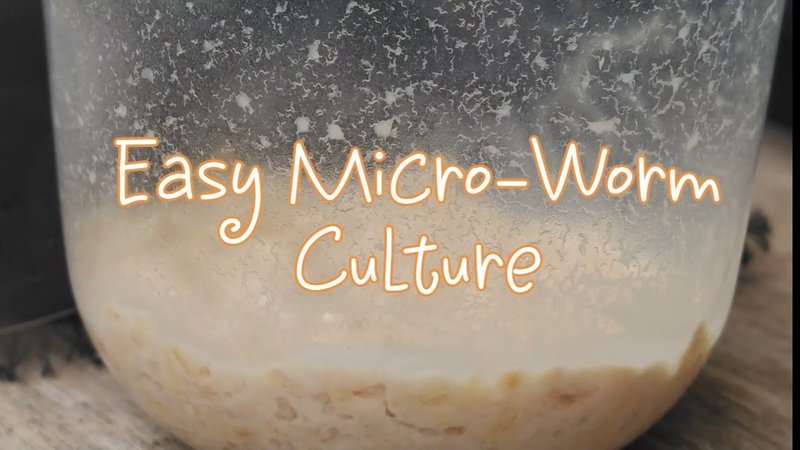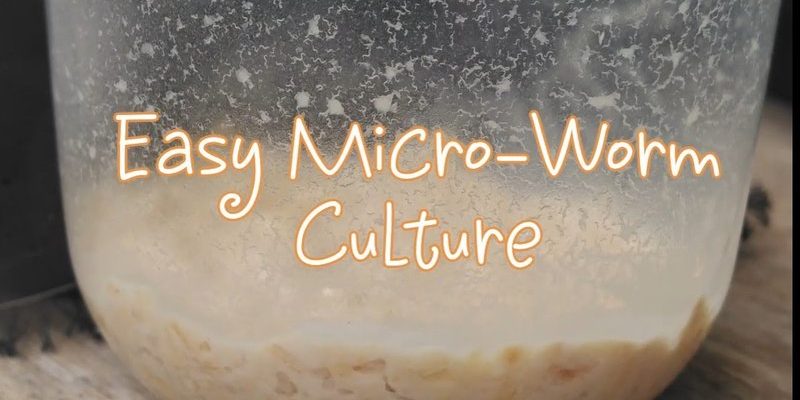
Microworms, scientifically known as *Panagrellus redivivus*, are tiny nematodes that can be used in a variety of educational settings. They’re easy to care for, reproduce quickly, and can be fed to fish or used as a food source for other critters. For teachers, they represent a hands-on way to teach concepts ranging from life cycles to ecological interactions. So, let’s dive deeper into how you can effectively incorporate microworms into your school science lessons.
Why Choose Microworms for Science Demonstrations?
Using microworms in science demonstrations comes with a bunch of benefits. Firstly, they are incredibly easy to cultivate. You don’t need a high-tech lab or a lot of resources. With just a few ingredients, like oatmeal, water, and a starter culture, you can grow your own microworm culture in no time! This makes them an ideal choice for classrooms, where practicality is key.
Another great thing about microworms is their rapid reproduction rate. They can multiply quickly, providing a consistent supply for experiments or demonstrations. For instance, if you’re studying biology, observing their life cycle from eggs to adults can help students grasp concepts like reproduction and development. Plus, not to mention, this process is visually engaging!
Lastly, microworms are non-toxic and harmless, making them safe for students of all ages. This opens the door for hands-on interaction, allowing students to observe and even touch these tiny creatures. It’s not every day that students get to play with live animals, and this interactive element can create lasting memories and learning moments.
Setting Up Your Microworm Culture
Getting started with microworms is simpler than you might think. Here’s how to set up your culture in just a few easy steps:
- Gather Your Supplies: You’ll need a clean container, oatmeal, water, and a starter microworm culture. Plastic containers work great, and you can often find starter cultures online or at pet stores.
- Mix the Culture Medium: Combine oatmeal and water in a bowl until it reaches a thick, paste-like consistency. This will be the food source for your microworms.
- Add the Starter Culture: Once your medium is ready, introduce your starter microworm culture to the mixture. Stir it in gently to distribute them evenly.
- Seal and Store: Cover the container with a breathable lid, like cheesecloth or a coffee filter. Then place it in a warm, dark spot. The optimal temperature for microworm growth is around 70-80°F.
After a few days, you’ll begin to see a population explosion! It’s a wonderful way to illustrate exponential growth in biology for your students.
Microworms in Life Cycle Studies
Life cycles are an essential topic in biology, and microworms are a fantastic specimen for observation. You might be wondering how these tiny creatures help illustrate such concepts. Here’s the thing: you can easily observe the entire life cycle, from egg to adult, all within a single classroom project.
Microworms typically reproduce in about 7 to 10 days, depending on the conditions. You can take the opportunity to have your students keep a daily observation journal. They can note how many worms they see, what they look like, and any changes in the environment. You can even introduce various variables, such as altering temperature or food type, and see how it affects their growth.
This kind of hands-on learning provides an engaging way to understand life cycles. Plus, students can draw parallels between microworms and larger organisms. It becomes a relatable way to understand the broader concepts of life, reproduction, and development.
Microworms and Ecosystem Exploration
Ecosystems are a key concept in science, and microworms can help students explore this idea in an engaging manner. You might think about creating a mini-ecosystem right in your classroom. By adding plants, soil, and even other small organisms, students can see how microworms fit into a larger ecological picture.
For instance, you can set up a simple experiment where students investigate the role microworms play in breaking down organic matter. In nature, worms and similar critters help decompose dead materials, returning nutrients to the soil. By simulating these processes, students can get hands-on experience with concepts such as decomposition, nutrient cycling, and food webs.
You could also have students map out the food chain, including microworms, plants, and other organisms. This will help them visualize how energy and nutrients flow through an ecosystem. Understanding these dynamics is crucial for grasping more complex ecological concepts later on.
Tips for Managing Microworm Cultures
While setting up a microworm culture can be straightforward, managing it effectively is key to ensuring success. Here are some handy tips:
- Avoid Overcrowding: Microworms can multiply quickly, so it’s crucial to keep their environment from becoming overcrowded. If you see a ton of worms, it might be time to separate the culture into multiple containers.
- Keep It Clean: Mold can sometimes be an issue in worm cultures. To prevent this, ensure the food mixture you prepare is fresh and check for signs of mold regularly.
- Watch the Temperature: Maintaining a stable temperature is essential. Too hot or too cold can affect growth rates and health. Use a thermometer to keep tabs on the conditions inside your culture.
Managing your microworm culture doesn’t have to be complicated. Just a little bit of diligence will go a long way in keeping your experiment thriving.
Using microworms in school science demonstrations opens up a world of learning opportunities for students. Whether studying life cycles or exploring ecosystems, these tiny creatures can bring lessons to life in ways textbooks often can’t.
Encouraging hands-on interaction not only fosters curiosity but also builds a deeper connection to the subject matter. So, if you’re looking for a way to make your science classes more engaging, consider giving microworms a try. They’re easy to manage, safe for students, and, best of all, fun to observe. Who wouldn’t want to watch a bunch of wriggly worms while learning about life? Give it a shot, and you might just inspire the next generation of scientists!

